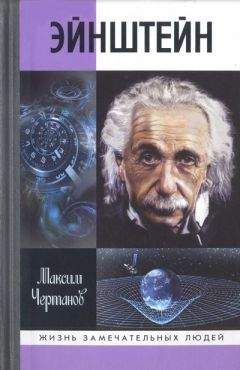Роберт Дилтс - Стратегии гениев. Том 2. Альберт Эйнштейн

Помощь проекту
Стратегии гениев. Том 2. Альберт Эйнштейн читать книгу онлайн
ТРАНСДЕРИВАЦИОННЫЙ ПОИСК (TRANSDERIVATIONAL SEARCH) – процесс обратного поиска в массиве воспоминаний и психических репрезентаций опыта, на базе которого было построено текущее поведение или реакция.
УБЕЖДЕНИЯ (BELIEFS) – постоянно хранимые в памяти обобщения о: 1) причине, 2) значении и 3) границах: а) окружающего нас мира, б) нашего поведения, в) наших способностей и г) нашей личности. Убеждения действуют на ином уровне, чем объективная реальность, и служат для направления и истолкования наших восприятий реальности, зачастую путем привязки их к нашей системе ценностей или критериев. Убеждения чрезвычайно трудно изменить, используя обычные правила логики или рациональное мышление.
УСЛОВИЯ ХОРОШО СФОРМИРОВАННОЙ ЦЕЛИ (WELL-FORMEDNESS CONDITIONS) – набор условий, необходимых для получения эффективного и экологичного результата. В НЛП конкретная цель считается хорошо сформированной, если ее можно: 1) выразить в положительных терминах; 2) определить и оценить на основе сенсорного опыта; 3) сохранить положительные побочные продукты нынешнего состояния; 4) адекватно контекстуализировать с целью соответствия внешней экологии; а кроме того, если 5) процесс достижения этой цели может быть начат, продолжен и завершен тем, кто желает ее достичь.
УТИЛИЗАЦИЯ (UTILIZATION) – метод, при котором к стратегии или паттерну поведения подстраиваются или повторяют его, чтобы оказать влияние на реакцию другого человека.
ЦИТИРОВАНИЕ (QUOTES) – случай, когда сообщение, которое вы хотите сделать, заключено в скобки, как если бы оно было высказано кем-то иным.
ЧАСТИ (PARTS) – метафорический способ обсуждения независимых программ и стратегий поведения. Программы или “части” часто развивают нечто, что становится характерной чертой личности.
ЯКОРЕНИЕ (ANCHORING) – процесс ассоциирования внутренней реакции с некоторым внешнимтриггером – пусковым механизмом (аналогично классическим условным рефлексам), так что реакция может быть быстро, а иногда даже неявно, вызвана повторно.
ЛИТЕРАТУРА
1. Albert Einstein, Autobiographical Notes, in “Albert Einstein, Philosopher-Scientist” by Artur Schilpp, Northwestern University Press, Evanston, Ill., 1949, p. 32.
2. Albert Einstein, Isaac Newton, in “Out of My Later Years”, The Citadel Press, Secaucus, New Jersey, 1956, pp. 219-220.
ЭПИСТЕМОЛОГИЯ ЭЙНШТЕЙНА1. Albert Einstein: A Portrait, Pomegranate Calendars & Books, Corte Madera, CA, 1984, p. 3.
2. Albert Einstein, “The Religiousness of Science”, The World As I See It, The Citadel Press, Secaucus, New Jersey, 1934, p. 29.
3. Albert Einstein, Science and Religion, in “Out of My Later Years”, The Citadel Press, Secaucus, New Jersey, 1956, p. 21.
4. Albert Einstein, Morals and Emotios, in “Out of My Later Years”, The Citadel Press, Secaucus, New Jersey, 1956, p 17.
5. Albert Einstein, The Laws of Science and the Laws of Ethics, in “Out of My Later Years”, The Citadel Press, Secaucus, New Jersey, 1956, p. 114.
6. Albert Einstein, Science and Religion, p. 22.
7. Albert Einstein, The Common Language of Science, in “Out of My Later Years”, The Citadel Press, Secaucus, New Jersey, 1956, p. 111.
8. William James, Principles of Psychological, Britannica Great Books, Encyclopedia Britannica Inc., Chicago Ill., 1979, p. 5.
9. William James, Principles of Psychological, p. 15.
10. Albert Einstein, Science and Religion, p. 24-25.
11. Albert Einstein, Science and Religion, p. 26.
12. Albert Einstein, Science and Religion, p. 26.
13. Albert Einstein, The Laws of Science and the Laws of Ethics, p. 114-115.
14. Albert Einstein, The Laws of Science and the Laws of Ethics, p. 115.
15. Albert Einstein, The Laws of Science and the Laws of Ethics, p. 115.
16. Albert Einstein, The Laws of Science and the Laws of Ethics, p. 115.
17. Albert Einstein, Morals and Emotios, p. 19.
18. Albert Einstein, Science and Religion, p. 24.
19. Albert Einstein, The Common Language of Science, p. 113.
20. Albert Einstein: A Man for All Seasons, Pomegranate Calendars & Books, Corte Madera, CA, 1987, p. 14.
21. Albert Einstein: A Man for All Seasons, p. 16.
22. Albert Einstein, Morals and Emotios, p. 19.
23. Albert Einstein: A Man for All Seasons, p. 6.
24. Albert Einstein, “Society and Personality”, The World As I See It, The Citadel Press, Secaucus, New Jersey, 1934, pp. 8-9.
25. Albert Einstein, Science and Religion, p. 23.
26. Albert Einstein: A Man for All Seasons, p. 10.
27. Donald Clarke, Great Inventors & Discoveries, Marshall Cavendish Books Limited, London, 1978, p. 64.
28. Bandler, R. & Grinder, D., The Structure of Magic Vol. 1, Science and Behavior Books, Palo Alto, CA, 1975, pp. 13-14.
СТРАТЕГИЯ ЭЙНШТЕЙНА ДЛЯ МАКРОМОДЕЛИРОВАНИЯ1. Albert Einstein, The Foundaments of Theoretical Physics, in “Out of My Later Years”, The Citadel Press, Secaucus, New Jersey, 1956, p. 98.
2. Albert Einstein, Physics and Reality, in “Ideas and Opinions”, Crown Books, New York, NY, 1954, p. 293.
3. Albert Einstein, Autobiographical Notes, in “Albert Einstein, Philosopher-Scientist” by Artur Schilpp, Northwestern University Press, Evanston, Ill., 1949, p. 33.
4. Albert Einstein: A Portrait, Pomegranate Calendars & Books, Corte Madera, CA, 1984.
5. Rene Weber, The Enfolding-Unfolding Universe: A Conversation with David Bohm, Re-Vision, Summer/Fall, 1978, p. 30.
6. Rene Weber, The Enfolding-Unfolding Universe, p. 30.
7. Albert Einstein, Autobiographical Notes, p. 87.
8. Albert Einstein, Physics and Reality, p. 318.
9. Albert Einstein, Science and Religion, in “Out of My Later Years”, The Citadel Press, Secaucus, New Jersey, 1956, p. 28.
10. Albert Einstein, Autobiographical Notes, in “Albert Einstein, Philosopher-Scientist” by Artur Schilpp, Northwestern University Press, Evanston, Ill., 1949, p. 7.
11. Albert Einstein, Autobiographical Notes, p. 89.
12. Rene Weber, The Enfolding-Unfolding Universe, p. 32.
13. M. Maruyama, THE SECOND CYBERNETICS: Deviation-Amplifying Mutual Causal Processes, in “American Scientist”, Vol. 51, 1963, p. 174.
14. Albert Einstein, Autobiographical Notes, p. 87.
15. M. Maruyama, THE SECOND CYBERNETICS, p. 174.
16. Albert Einstein, Autobiographical Notes, p. 13.
17. Albert Einstein, Autobiographical Notes, p. 89.
18. Albert Einstein, Physics and Reality, p. 322.
19. Albert Einstein, Autobiographical Notes, p. 7.
20. Albert Einstein, Physics and Reality, p. 292.
21. Albert Einstein, Autobiographical Notes, p. 13.
БАЗОВАЯ СТРУКТУРА МЫСЛИТЕЛЬНОЙ СТРАТЕГИИ ЭЙНШТЕЙНА1. Max Wertheimer, Productive Thinking, Greenwood Press, Westpoint, Connecticut, Enlarged Edition, 1959, p. 228.
2. Max Wertheimer, Productive Thinking, p. 228.
3. Albert Einstein, Physics and Reality, in “Ideas and Opinions”, Crown Books, New York, NY, 1954, p. 290.
4. Albert Einstein, Physics and Reality, p. 290.
5. Max Wertheimer, Productive Thinking, p. 228.
6. Albert Einstein, Letter to Jacques Hadamard, “The Creative Process”, edited by Brewster Ghiselin, Mentor Books, New American Library, New York, NY, 1952, p. 43.
7. Max Wertheimer, Productive Thinking, p. 228.
8. Max Wertheimer, Productive Thinking, p. 212.
9. Albert Einstein, Physics and Reality, p. 291.
ВОЗЗРЕНИЯ ЭЙНШТЕЙНА О ЯЗЫКЕ1. Albert Einstein, Autobiographical Notes, in “Albert Einstein, Philosopher-Scientist” by Artur Schilpp, Northwestern University Press, Evanston, Ill., 1949, p. 7.
2. Albert Einstein, The Common Language of Science, in “Out of My Later Years”, The Citadel Press, Secaucus, New Jersey, 1956, p. 111.
3. Albert Einstein, The Common Language of Science, p. 111.
4. Albert Einstein, The Common Language of Science, p. 111.
5. Albert Einstein, The Common Language of Science, p. 111.
6. Albert Einstein, The Common Language of Science, pp. 111-112.
7. Albert Einstein, The Common Language of Science, p. 112.
8. Bandler, R. & Grinder, D., The Structure of Magic Vol. 1, Science and Behavior Books, Palo Alto, CA, 1975, pp. 12-14.
9. Albert Einstein, The Common Language of Science, p. 112.
10. Albert Einstein, Autobiographical Notes, p. 9.
11. Albert Einstein, The Common Language of Science, p. 112.
12. Bandler, R. & Grinder, D., The Structure of Magic Vol. 1, pp. 37-38.
13. Albert Einstein, The Theory of Relativity, in “Out of My Later Years”, The Citadel Press, Secaucus, New Jersey, 1956, p. 41.
14. Albert Einstein, The Theory of Relativity, p. 41.
15. Albert Einstein, The Common Language of Science, p. 112-113.
5. МИКРОАНАЛИЗ ПРОЦЕССА ТВОРЧЕСКОГО МЫШЛЕНИЯ ЭЙНШТЕЙНА1. Albert Einstein, Relativity, Crown Publishers, Inc., New York, NY, 1961, p. 66-68.
2. Albert Einstein, Relativity, p. 108-109.
3. Albert Einstein, Relativity, p. 111.
4. Albert Einstein, Relativity, p. 111-112.
5. Albert Einstein, Geometry and Experience, in:EINSTEIN: A Centenary Volume, edited by A.P. French, Harvard University Press, Cambridge, Massachusetts, 1979, p. 294.
6. Albert Einstein, Geometry and Experience, p. 297.
7. Albert Einstein, Autobiographical Notes, in “Albert Einstein, Philosopher-Scientist” by Artur Schilpp, Northwestern University Press, Evanston, Ill., 1949, p. 19.
ТЕОРИЯ ОТНОСИТЕЛЬНОСТИ1. Albert Einstein, Relativity, Crown Publishers, Inc., New York, NY, 1961, p. 144.
2. Ibid, p. 9.
3. Ibid, p. 9.
4. Ibid, p. 9.
5. Ibid, pp 141-142.
6. Ibid, p. 136-137.
7. Ibid, p. 138-139.
8.Ibid, p. 21-22.
9. Ibid, p. 22-23.
10. Ibid, p. 25-26.
11. Ibid, p. 26-27.
12. Ibid, p. 139-140.
13. Ibid, p. 139.
14. J. Schwarz & M. McGuinnes, Einstein For Beginners, Pantheon Books, New York, 1983, p. 82.
15. Albert Einstein, Relativity, Crown Publishers, Inc., New York, NY, 1961, p. 149-150.
16. Ibid, p. 144.
17. Ibid, p. 141.
18. Ibid, p. 141-142.
НЕКОТОРЫЕ ПСИХОЛОГИЧЕСКИЕ АСПЕКТЫ ТЕОРИИ ОТНОСИТЕЛЬНОСТИ1. J. Schwarz & M. McGuinnes, Einstein For Beginners, Pantheon Books, New York, 1983, p. 3.
ПРИМЕНЕНИЕ СТРАТЕГИИ ЭЙНШТЕЙНА1. N.E. Thing Enterprises, One Kendall Square, Building 200, Cambridge, MA, 02139.
2. Dephmaker, Daniel Dyckman, 300 First Avenue № 4-B, New York, 1991.
ЗАКЛЮЧЕНИЕ1. Albert Einstein, On Education, in “Out of My Later Years”, The Citadel Press, Secaucus, New Jersey, 1956, p. 36.
2. Albert Einstein, On Education, p. 36.
3. Albert Einstein, Autobiographical Notes, in “Albert Einstein, Philosopher-Scientist” by Artur Schilpp, Northwestern University Press, Evanston, Ill., 1949, p. 17…
4. Albert Einstein, On Education, p. 36.
5. Albert Einstein, On Education, p. 32.
6. Albert Einstein, On Education, pp. 31-32.
7. Albert Einstein, Pomegranate Calendars & Books, Corte Madera, CA, 1986, p. 24.
























